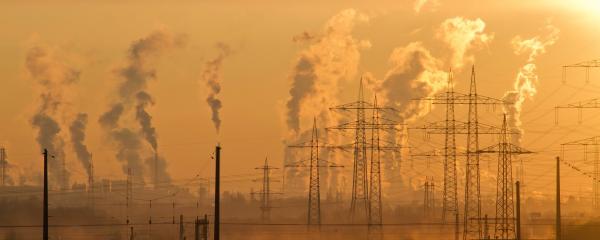Cutting CO₂

Challenge
Concentrations of greenhouse gases, which trap heat in the atmosphere, are record high.
Prior to the industrial revolution atmospheric carbon dioxide (CO2)) concentrations remained almost constant at around 280 parts per million for thousands of years. Since then, CO2 concentrations have increased by a whopping 50%, reaching 417.9 ppm in 2022 because of the burning of fossil fuels, deforestation and changes in land-use.
CO2 is by far the most important of the long-lived greenhouse gases related to human activities – the others include methane and nitrous oxide. Nearly half of CO2 emissions remain in the atmosphere. Just over one quarter are absorbed by the ocean and just under 30% by land ecosystems like forests and wetlands. As long as emissions continue, CO2 will continue accumulating in the atmosphere, leading to global temperature rise. Given the long life of CO2, the temperature level already observed will persist for decades to come.
To keep global temperature rise to no more than 1.5° Celsius above the pre-industrial era (the lower level of the Paris Agreement on Climate Change), there must be steep reductions in greenhouse gases, leading to global net zero emissions by the early 2050s.
Without urgent action, current mitigation policies will lead to estimated global warming of around 2.8 °C by the end of this century compared to pre-industrial levels.
Response
But we cannot effectively manage what is not measured. WMO is therefore developing the Global Greenhouse Gas Watch to support and inform mitigation actions.
The Global Greenhouse Gas Watch – also known as G3W – will strengthen and coordinate monitoring activities to provide a more solid scientific basis to inform mitigation actions taken under the Paris Agreement on climate change.
This important initiative aims to fill critical information gaps in the knowledge of geographic distribution and trends fluxes of the major greenhouse gases and provide an integrated, operational framework that brings under one roof all space-based and surface-based observing systems, as well as modelling and data assimilation capabilities.
The Global Greenhouse Gas Watch will provide a wealth of quantitative data to help improve our understanding of greenhouse gas cycles. This will allow for better prediction of long-term climate trajectories and inform mitigation activities required here and now.
It builds on WMO’s successful track-record in coordinating international collaboration in weather prediction and climate analysis and on long-standing activities in greenhouse gas monitoring and research, covering from minutes to years, and from the local scale to the globe.




